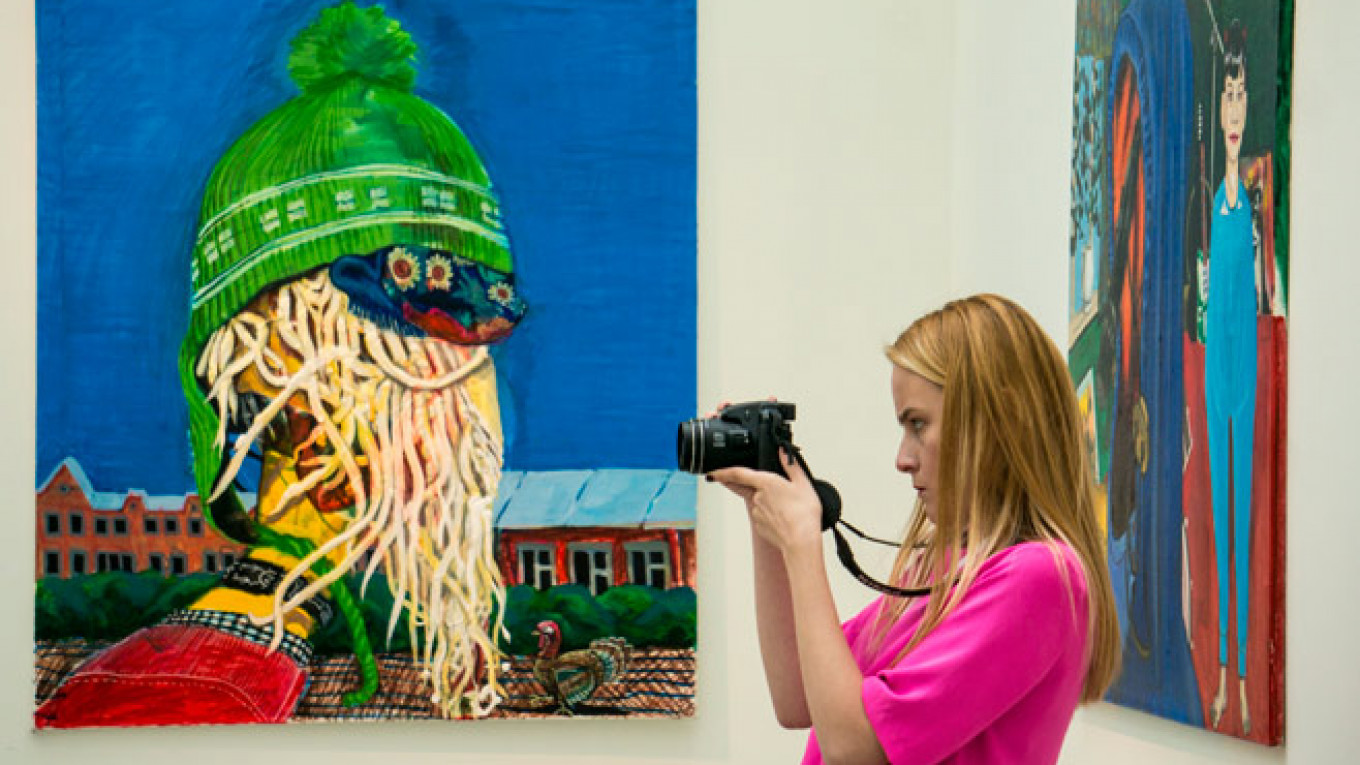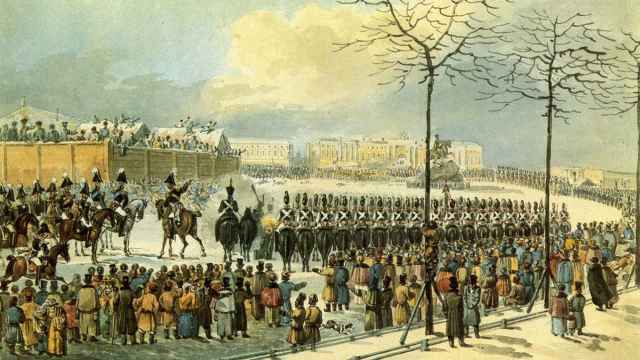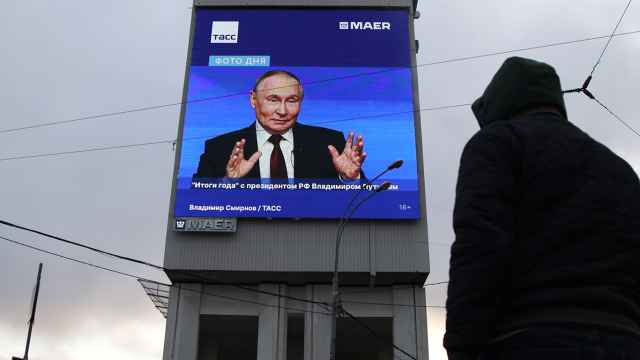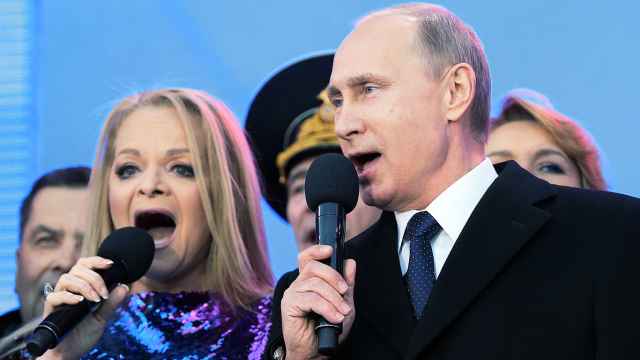A global cultural superpower, Russia enjoys a long history of art appreciation. However, Russian contemporary artists, in contrast to their older peers, remain little known to the world, and the contemporary art sector is largely underplayed in the country. Its development is a complex process and depends on a combination of many elements, such as the creation of new museums, the organization of biennales as well as special exhibitions with a contemporary art focus.
To grow successfully, the art scene also needs a market, or commercial infrastructure comprised of a strong collecting community and platforms where sellers could meet potential buyers. COSMOSCOW, Russia's only international art fair, at which Credit Suisse is a strategic partner, took place from Sept. 11-13 and plays the role of connecting the Russian and global art scenes and each year aims to display Russia's emerging artistic talent to local and international collectors.
A vibrant contemporary art sector contributes to city development from both cultural and financial perspectives. Places that boast strong art communities and stage prominent events become tourist hotspots and draw in thousands of art enthusiasts from across the globe.
Berlin, for example, has come a long way in this regard and has turned into a global mecca for contemporary art. Home to more than 20,000 artists from around the world, the city features more than 400 contemporary art galleries and more than 150 non-commercial showrooms. The vibrant art scene serves as one of the major city attractions, ensuring steady tourist inflows.
Berlin's success story became a reality largely due to the development of a strong non-profit system represented by museums, exhibitions and biennales, which made contemporary art more accessible.
Such institutions are developing in Russia as well. With Manifesta 2014 in St. Petersburg, the Moscow Biennale for Contemporary Art, Moscow's Winzavod art cluster, and Garage Museum of Contemporary Art, the country is currently experiencing a new momentum in promoting contemporary art.
A number of philanthropic organizations such as V-A-C Foundation, The Ekaterina Cultural Foundation, The Foundation of Vladimir Smirnov and Konstantine Sorokin and the Kandinsky Prize have been established to help young artists develop their talents and get recognition in Russia and abroad. This work is critically important and must be continued to grow the contemporary art scene in Russia further.
Another important step is to lay the foundation for the creation of a commercial infrastructure, which must include a strong collecting community ready to buy Russian contemporary artworks.
China could be an interesting example of an emerging economy where the contemporary art market has grown significantly due to the creation of a vibrant collecting base. The country now rivals the U.S. in terms of the global contemporary art market share.
Moreover, 47 Chinese artists made it to ArtPrice's Top 100 contemporary artist sales ranking, compared with 19 Americans. In contrast, only five Russian artists are included into the Top 500 list, ranking between 330 and 428. None of them is a young artist under the age of 30.
Swiss business executive and diplomat Uli Sigg became one of the pioneers and champions of Chinese contemporary art in the 1990s when China's art scene was largely unknown. Determined to document the country's development through art, Sigg amassed the largest and most comprehensive collection of Chinese contemporary art.
In 2012, he donated most of it to Hong Kong's M+ museum, which is set to open in 2019. Until the museum's premises are ready, the collection is being displayed around the world, bringing the works of Chinese contemporary artists to global audiences.
Due to stronger interest in Chinese contemporary art from domestic collectors and closer ties with the global art community, China's contemporary art scene has seen tremendous development. It now features many new state and private museums.
In Russia, a new generation of more passionate and knowledgeable collectors is emerging and it seems the older generation is getting bored with the old masters and Western blue chip contemporary artists. So they are beginning to look at Russia's local young talent. Several Russia-based companies and banks are building their corporate art collections with a particular focus on Russian contemporary artists.
The availability of platforms where sellers could meet potential buyers is another important element for art scene development. This role is increasingly played by art fairs, which are now the second largest sales channels in the art market globally after in-gallery transactions.
Based on the European Fine Art Foundation's 2014 report, they account for almost 40 percent of the global turnover, up from 33 percent the previous year. More than 180 international art fairs are held in the major cities of the world annually, and their number has more than tripled since 2000. Now, in COSMOSCOW, Russia also has its own annual international contemporary art fair.
Russia is rich in creative talent. However, to flourish it needs well-developed infrastructure that would make Russian emerging artists more visible and accessible both inside the country and globally. The non-profit system of museums, foundations and special exhibitions can cultivate the community's love and passion for art. However, market platforms where collectors could buy artworks and support artists could fuel the contemporary art scene growth further.
Andre Rogger is head of the Credit Suisse art collection. Julia Gushchina and Martin Wehnert of Credit Suisse contributed to this analysis.
A Message from The Moscow Times:
Dear readers,
We are facing unprecedented challenges. Russia's Prosecutor General's Office has designated The Moscow Times as an "undesirable" organization, criminalizing our work and putting our staff at risk of prosecution. This follows our earlier unjust labeling as a "foreign agent."
These actions are direct attempts to silence independent journalism in Russia. The authorities claim our work "discredits the decisions of the Russian leadership." We see things differently: we strive to provide accurate, unbiased reporting on Russia.
We, the journalists of The Moscow Times, refuse to be silenced. But to continue our work, we need your help.
Your support, no matter how small, makes a world of difference. If you can, please support us monthly starting from just $2. It's quick to set up, and every contribution makes a significant impact.
By supporting The Moscow Times, you're defending open, independent journalism in the face of repression. Thank you for standing with us.
Remind me later.






